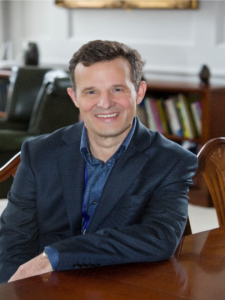
Last Friday, March 2nd, Prof. Javier Bonet from University of Greenwich gave an interesting seminar at UPC on the results (published in the paper by Greto et al. in 2016) his research team achieved when he was Professor of Computational Engineering and Head of the College of Engineering at Swansea University.
Several fields of science engineering have to do with physics with high deformations. Robots are becoming more and more present in everyday life and scientists have been trying to build new ones with improved characteristics for years now. Some of them, for example, are constructed starting from very flexible materials, similar to those present in living organisms: in this way, robots exhibit movements that are flexible enough to replicate more or less complex human motions and can easily be adapted to accomplish any kind of activity, including delicate tasks in the fields of medicine or manufacturing when working around humans.
Another area of interest is that of micro-electro-mechanical systems, made up of very small components moving and controlling mechanisms between two (or more) parts, that allow the system to work properly. It’s a very common practice to produce these components from materials that can be easily deformed and manufactured into various shapes.
We can think, for example, of a column bending or twisting:
However, in most cases it’s very difficult to mathematically describe problems involving deformations because materials are subjected to various changes over time and may become unstable.
When an object deforms, there are three mathematical laws (called ‘maps’) relating its old shape to the new one: the fibre, the volume and the area map. They allow us to know at any point the new distances, areas and volumes of the deformed object provided that we know the respective old quantities. The problem is that when dealing with geometrical non-linearities, the three maps depending on one another lead to very complex equations, with which most of times it’s tricky to work.
Prof. Bonet then introduced a new powerful technique, called convexity, explaining that it can ease mathematical calculation and thus fix material instability. Many of the problems mentioned above have a mathematical formulation (description of the phenomenon involved) that relies on complex equations and formulae, which sometimes also define very abstract quantities. Therefore, convexity can be used to express them through some others defining, instead, a very well-known concept (such as temperature, for example) and this can simplify the equations beneath the formulation.
In general, we can consider using convexity every time we are facing a problem involving lots of deformations. The use of convexity usually provides more accurate results than other techniques, because it avoids geometrical instabilities due to high localized deformations and ensures our mathematical model to be physically consistent (that is, to be valid at any point of the material considered).
